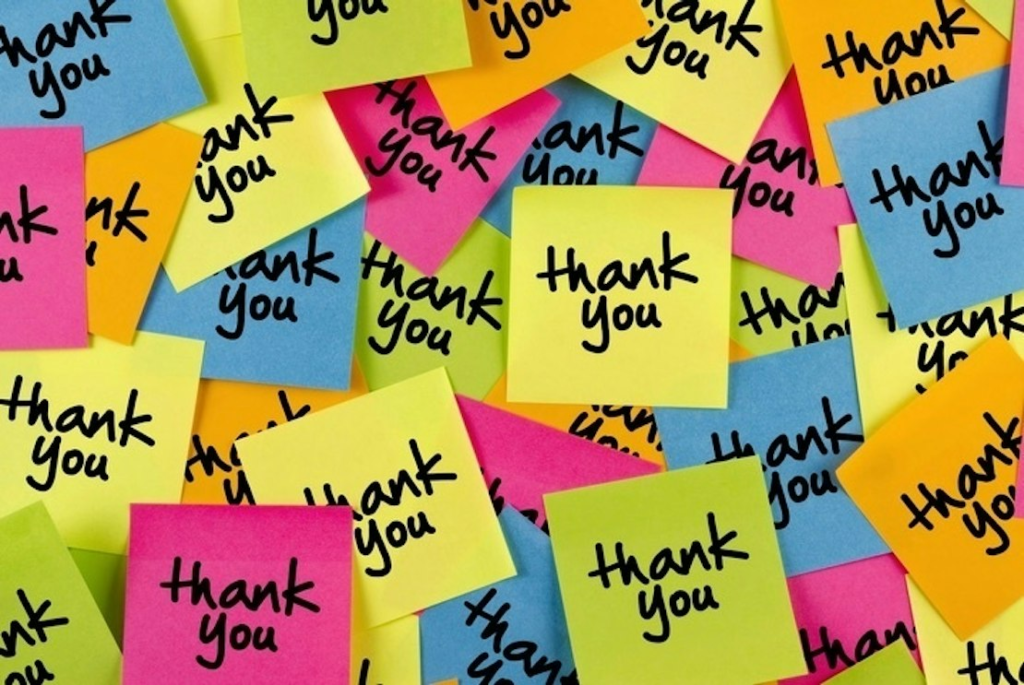
The Enduring Love? study found there were many non-verbalized ways to express appreciation. For example, when your partner takes the dog for a walk it could be their way of saying thank you for all the other domestic chores that you’ve been doing. Or they may take responsibility for loading the dishwasher because you do most of the cooking. This is a kind of appreciation or “gift”.
But here’s the clincher! According to research by Dr. Algoe and others, not all “thank yous” are created equal. The “thank you” needs to be expressed most lovingly and constructively to be received well and for the true benefits to kick in. The more responsive your partner is to your “thank you”, the better it was.
With that in mind, keep scrolling for my top tips on how to show your partner gratitude and say thank you like you mean it.
1. Emphasize the “you” in “thank you”
Dr. Algoe’s research found that the most impactful expressions of gratitude among couples in her study came when grateful partners called out the specific praiseworthiness of their partner’s actions.
They made their partner (the benefactor) feel understood and validated. Grateful partners perceived the benefactor as being more responsive and were in a better mood for it.
2. Use body language
It’s important to use your body language to convey your gratitude sincerely. Instead of an off-the-cuff “thanks” muttered over your shoulder as you walk from the other room, thank your partner face-to-face and make eye contact. Lean in, touch them, smile, and verbally express your gratitude.
3. Don’t overdo it
Dr. Algoe found that the benefits to the partner hearing and receiving the thank you were contingent on seeing their partner as caring, understanding, and validating. Going over the top when it’s unwarranted may undermine an expression.
4. Watch your pitch
Karyn Fish and her colleagues at McGill University found that vocal cues can help listeners evaluate the sincerity of a positive expression.
Acoustic analyses revealed that compliments perceived as being sincere were spoken faster and began with a higher pitch than those that sounded insincere. In contrast, compliments rated as insincere tended to get louder as they unfolded.Browse our partner-sponsored Glasses, with a variety of options to suit every taste and budget, available to buy online
5. Know the “why”
Fish’s research also found that motivations of both the speaker and hearer contribute to impressions of speaker sincerity. The research showed that even a feeling of authentic gratitude speaks volumes — the sincere intent to acknowledge your partner’s positive words or actions allows your thank you to come across more genuinely, naturally and is more likely to be received well. In other words, don’t say thank you for the sake of it.
6. Understand how your partner wishes to receive thanks
Finally, when making sure your thank yous are received well by your partner. In our large-scale study of long-term couple relationships, myself and colleagues at The Open University found that there are multiple ways of expressing gratitude, including non-verbal methods.
A written thank you note, for example, or a cup of tea landing on your desk mid-video call! Ask your partner how they wish to receive thanks and listen attentively to their answer so that your efforts to show them you care and appreciate them don’t go unnoticed.
It’s worth remembering though, that any acknowledgment of thanks, even a simple thank you can bring rewards for you and your partner. Expressing gratitude simultaneously makes your partner feel valued and — with minimal effort — makes it clear that you are worth their investment.
To learn more about the benefits of expressing gratitude in relationships, and find out how well you and your partner give thanks, download the Paired app and take our couple’s quiz.